Author: Mike Neville
Bred from the classic Czech Saaz and a wild landrace hop from the Caucasus region of Russia, Kazbek is an aroma variety that’s colloquially referred to as Super Saaz, as it’s known to impart beer with similar though more potent characteristics as Saaz. When used later in the boil and dry hop, Kazbek purportedly contributes citrus, sweet fruit, berry, and noble spice notes to beer.
Alpha: 4.0 – 7.0%
Beta: 4.0 – 6.0%
Cohumulone: 35 – 40%
Total Oil: 0.9 – 1.8 mL/100g
Myrcene: 40 – 55%
Humulene: 20 – 35%
Caryophyllene: 10 – 15%
Farnesene: < 1%
Linalool: < 1%
Geraniol: < 1%
ß-Pinene: unknown
Parentage: Saaz and a wild Russian landrace hop
I’ve used Saaz many times, usually in low to moderate amounts when making Czech Pilsner, and I’ve always appreciate what it contributes. When I learned about Kazbek, and particularly that it was said to work well for dry hopping, my interest was piqued, so I picked some up for use in The Hop Chronicles.
| MAKING THE BEER |
I went with our standard Hop Chronicles Pale Ale recipe and made adjustments to the kettle hop additions to ensure a proper level of bitterness.
Kazbek Pale Ale
Recipe Details
| Batch Size | Boil Time | IBU | SRM | Est. OG | Est. FG | ABV |
|---|---|---|---|---|---|---|
| 5.5 gal | 60 min | 36.8 | 5.7 SRM | 1.056 | 1.009 | 6.17 % |
| Actuals | 1.056 | 1.009 | 6.17 % | |||
Fermentables
| Name | Amount | % |
|---|---|---|
| Pale Ale Malt 2-Row | 10 lbs | 83.34 |
| Vienna Malt | 2 lbs | 16.66 |
Hops
| Name | Amount | Time | Use | Form | Alpha % |
|---|---|---|---|---|---|
| Kazbek | 21 g | 60 min | Boil | Pellet | 5.5 |
| Kazbek | 28 g | 20 min | Boil | Pellet | 5.5 |
| Kazbek | 28 g | 10 min | Boil | Pellet | 5.5 |
| Kazbek | 28 g | 5 min | Boil | Pellet | 5.5 |
| Kazbek | 57 g | 2 min | Boil | Pellet | 5.5 |
| Kazbek | 57 g | 3 days | Dry Hop | Pellet | 5.5 |
Yeast
| Name | Lab | Attenuation | Temperature |
|---|---|---|---|
| Flagship (A07) | Imperial Yeast | 77% | 32°F - 32°F |
Notes
| Water Profile: Ca 125 | Mg 20 | Na 8 | SO4 310 | Cl 56 |
Download
| Download this recipe's BeerXML file |
After collecting the full volume of water, adjusting it to my desired profile, and getting it heating up, I weighed out and milled the grain.
When the water was properly heated, I incorporated the grains and set the controller to maintain my desired mash temperature of 152°F/67°C.
During the mash rest, I prepared the kettle hop additions.
Once the 60 minute mash was complete, I removed the grains and proceeded to boil for 60 minutes, adding hops at the times stated in the recipe.
When the boil was complete, I used my King Cobra IC to quickly chill the wort.
A refractometer reading showed the wort was at my target OG.
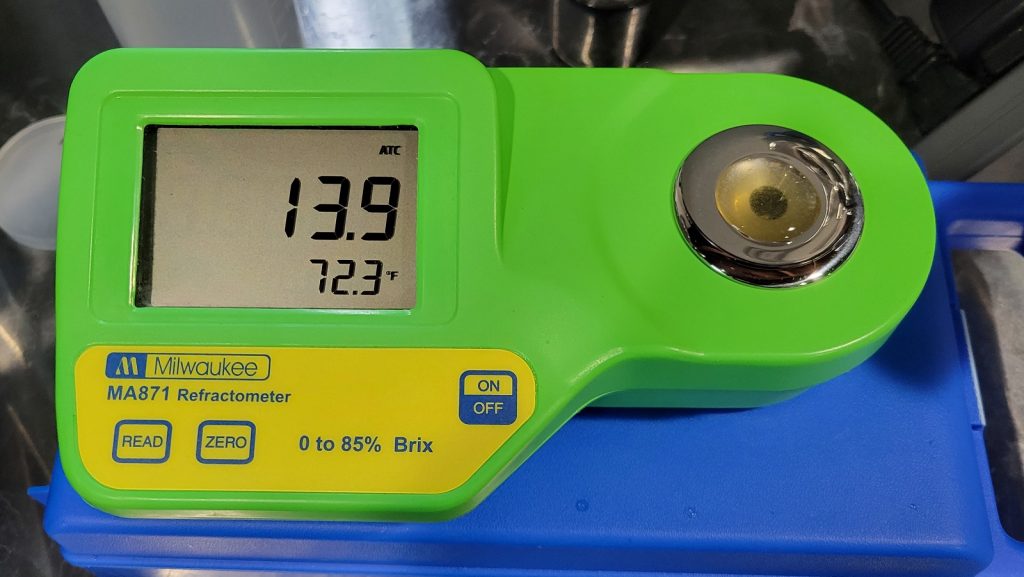
After transferring the wort to a sanitized fermented, I direct pitched a single pouch of Imperial Yeast A07 Flagship.
The beer was left to ferment at 68°F/20°C for 7 days before I took a hydrometer measurement confirming FG was reached.
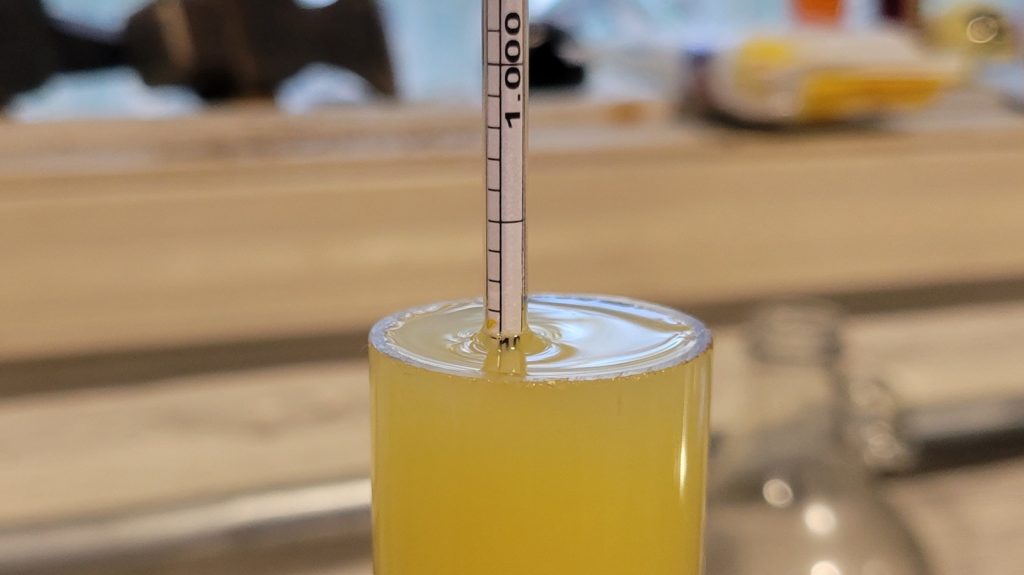
With fermentation complete, I cold-crashed the beer for 24 hours then pressure-transferred it to a CO2 purged keg, which was placed in my keezer and burst carbonated overnight before the gas was reduced to serving pressure. After a week of conditioning, it was ready for evaluation.
| METHOD |
Participants were instructed to focus only on the aromatic qualities of the beer before evaluating the flavor. For each aroma and flavor descriptor, tasters were asked to write-in the perceived strength of that particular characteristic on a 0-9 scale where a rating of 0 meant they did not perceive the character at all and a 9 rating meant the character was extremely strong. Once the data was collected, the average rating of each aroma and flavor descriptor was compiled and analyzed.
| RESULTS |
Huge thanks to our good friends from Yakima Valley Hops for not only sponsoring this series, but allowing me to hunker down at their booth at Homebrew Con 2022 in Pittsburgh, PA to collect data. A total of 50 people participated in the evaluation of this beer, all blind to the hop variety used until after they completed the survey. The average aroma and flavor ratings for each descriptor were plotted on a radar graph.
Average Ratings of Aroma and Flavor Perceptions
The 3 characteristics endorsed as being most prominent by participants:
| Aroma | Flavor |
| Citrus | Resinous |
| Tropical Fruit | Pine |
| Stone Fruit | Citrus |
The 3 characteristics endorsed as being least prominent by participants:
| Aroma | Flavor |
| Onion/Garlic | Onion/Garlic |
| Dank/Catty | Berry |
| Berry | Apple/Pear |
Next, participants were asked to rate the pungency/strength of the hop.
Tasters were then instructed to identify beer styles they thought the hop would work well in.
Finally, participants were asked to rate how much they enjoyed the hop character on a 1 to 10 scale.
My Impressions: I perceived this Kazbek Pale Ale as having slight strawberry paired with medium lemon rind and hints of herbal notes in the finish. While I felt the overall pungency was medium-low, the bitterness was quite firm, which provided a nice balance to the beer.
| CONCLUSION |
When most brewers think of Czech hops, it’s likely the noble variety known as Saaz fills the mind, though it’s not the only hop from this world-renowned beer region. Officially registered in 2008, Kazbek is often referred to as “Super Saaz” and is recommended for use late in the boil and even the dry hop, where it is said to contribute citrus, sweet fruit, berry, and herbal notes.
While the most prominent aroma and flavor characteristics noted by blind tasters of a Pale Ale hopped solely with Kazbek included citrus, tropical fruit, resinous, and pine, berry was one of the least endorsed, going against existing descriptors. Moreover, a majority of tasters felt Kazbek had moderate to strong pungency, which may explain the overwhelming sentiment that it would work well in hoppiers styles like IPA and American Pale Ale.
Overall, it seemed tasters were generally pleased with this Kazbek Pale Ale, which I personally felt possessed more berry and herbal notes than the blind tasters. To me, this single-hop beer was certainly enjoyable enough to keep around, but I likely won’t be using it on its own in a hoppy style again. However, I look forward to seeing how it does when used at lower rates in a more delicate styles such as Czech Pale Lager.
Kazbek hops are available now at Yakima Valley Hops, get some while you can! If you have any thoughts on this variety, please feel free to share them in the comments section below.
Support Brülosophy In Style!
All designs are available in various colors and sizes on Amazon!
Follow Brülosophy on:
FACEBOOK | TWITTER | INSTAGRAM
If you enjoy this stuff and feel compelled to support Brulosophy.com, please check out the Support page for details on how you can very easily do so. Thanks!



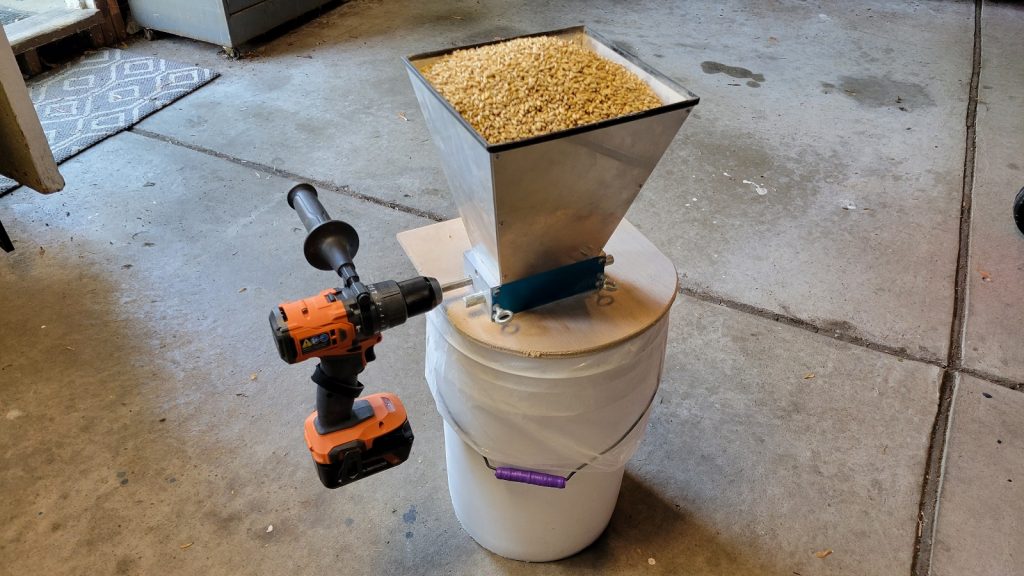
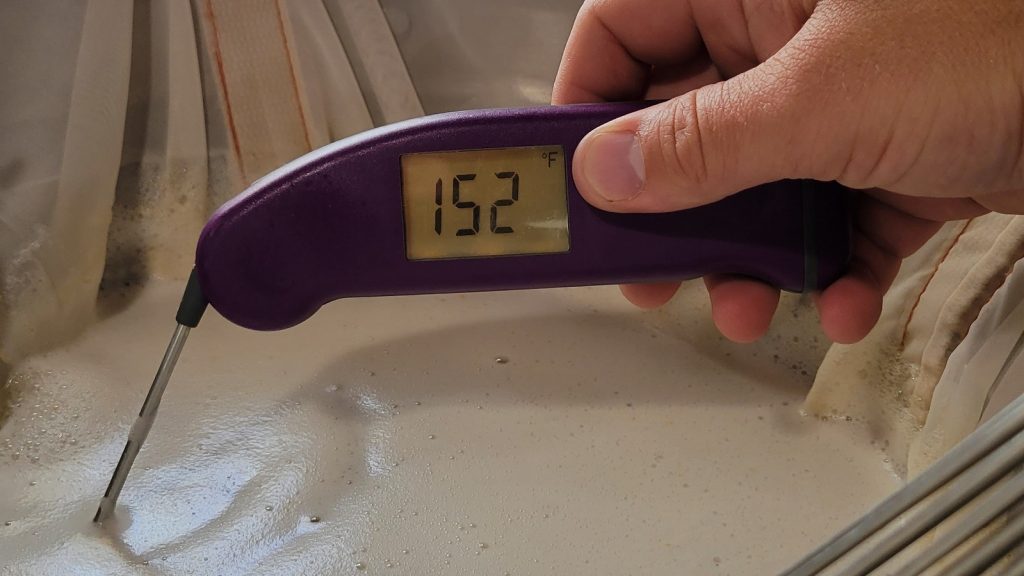
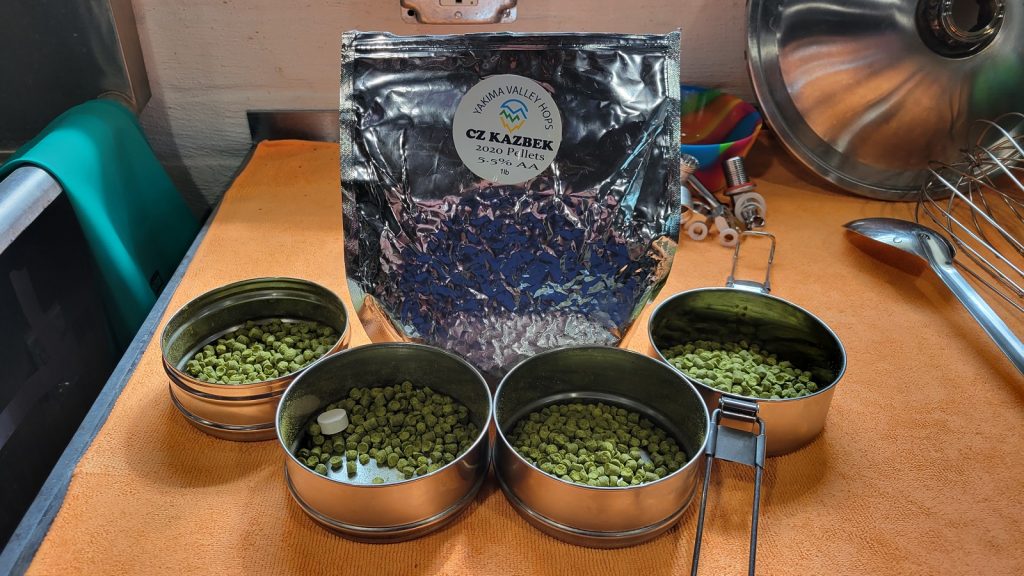
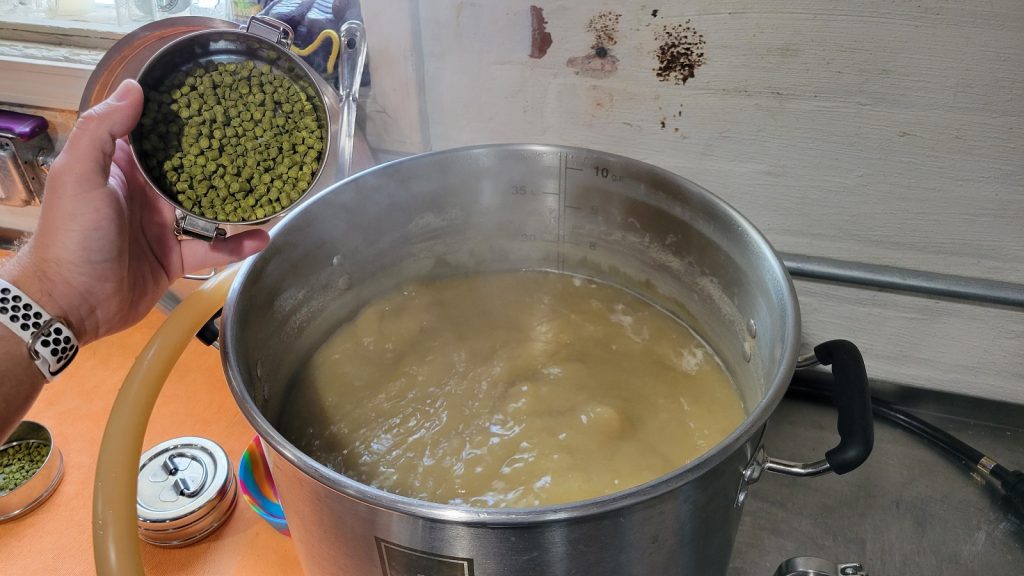

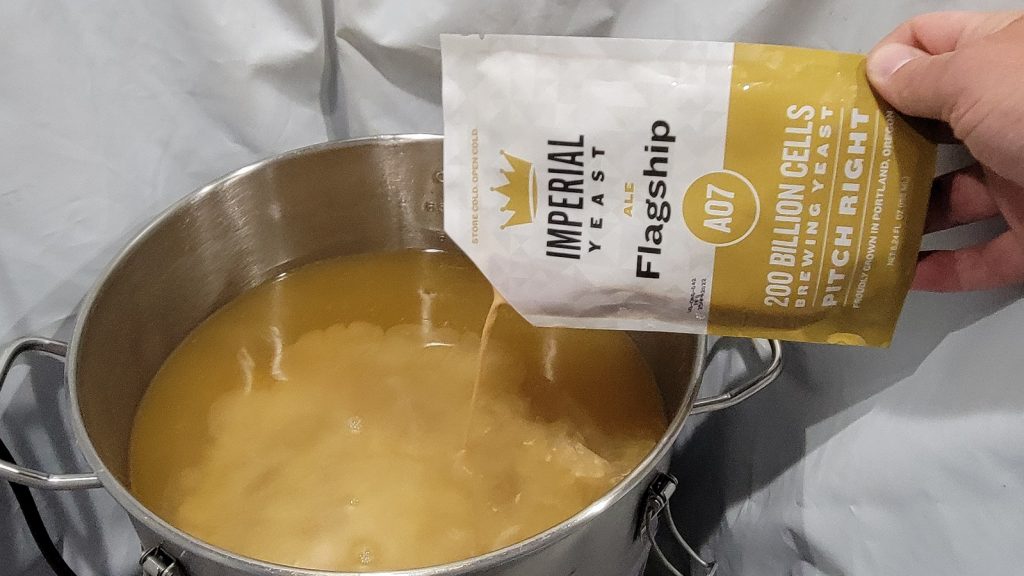


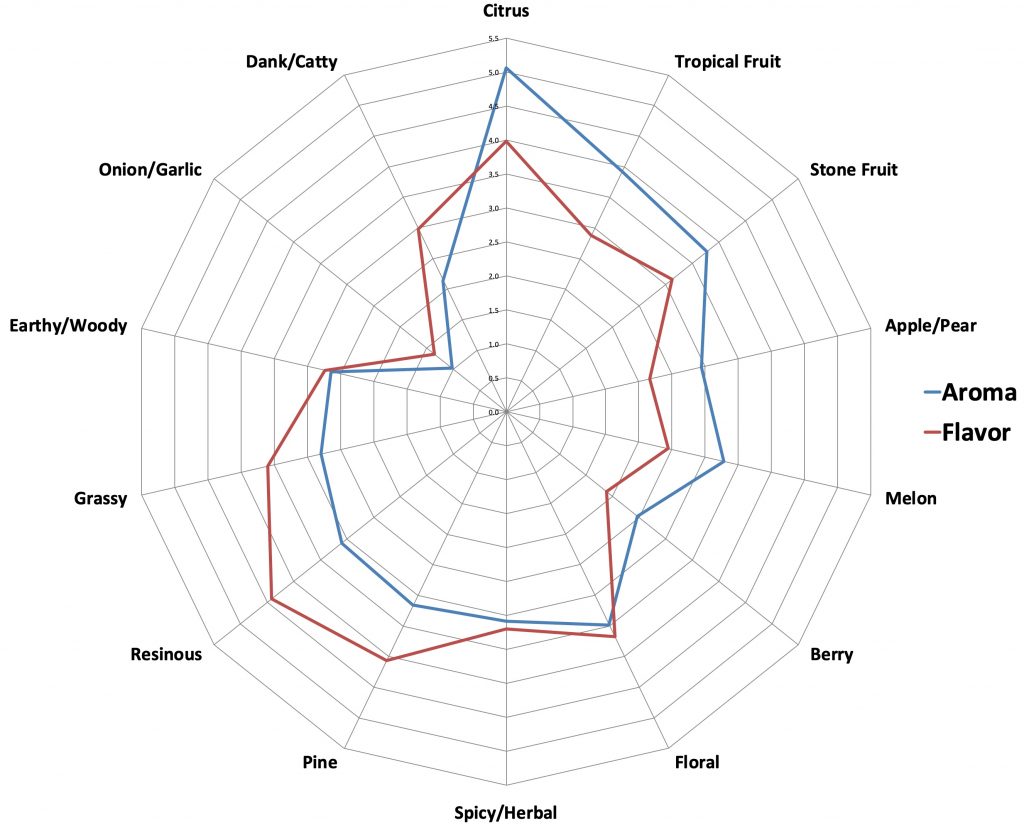
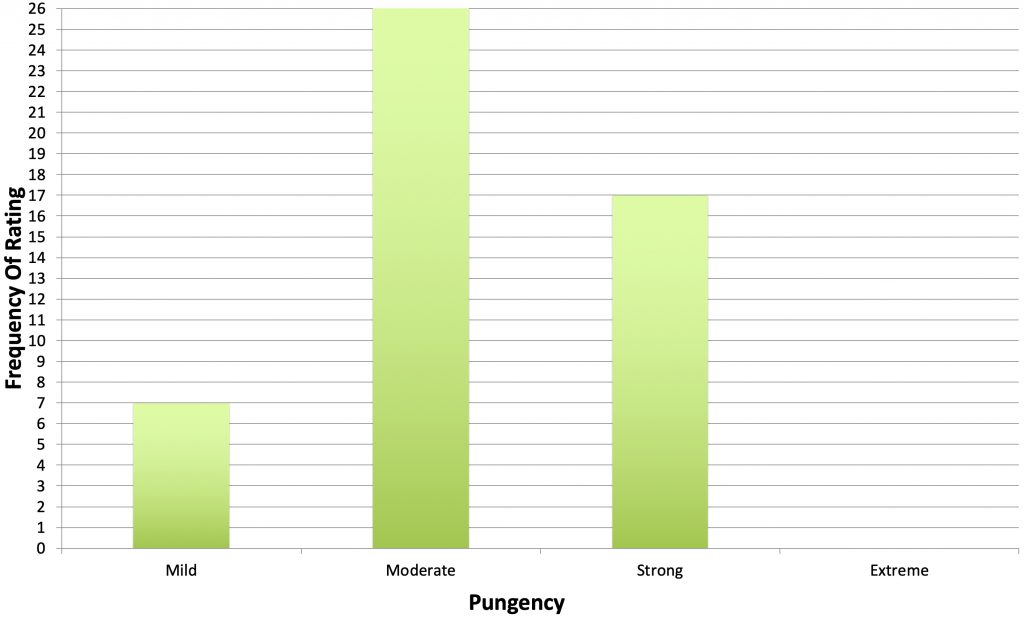
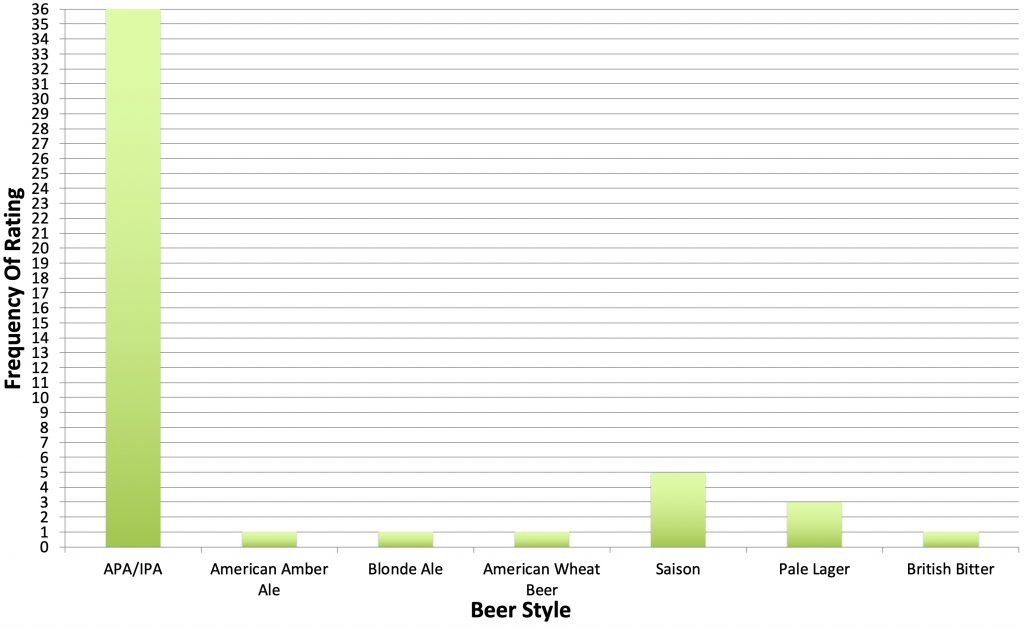
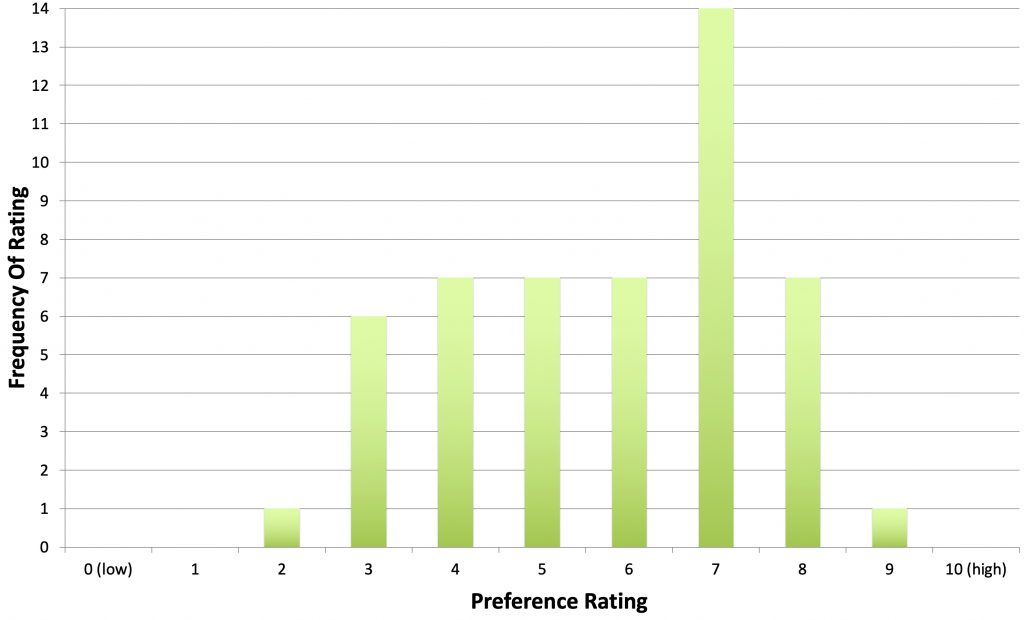






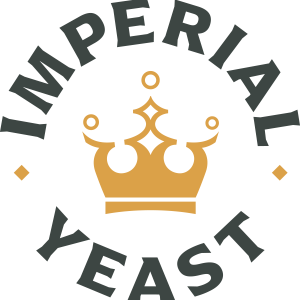

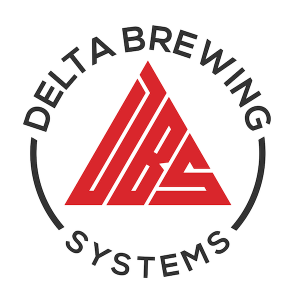


4 thoughts on “The Hop Chronicles | Kazbek (2020) Pale Ale”
I do find that Kazbek is one that takes a while for whatever reason for the flavors to settle, but I’m not sure if it is because I typically have used it in a Pilsner and it’s just taken a while for the pils to reach its peak in the keg. We both detected some pretty strong berry, almost reminiscent of Strawberry LaCroix (that kind of “artificial” strawberry).
Though I don’t think either of us used as much as you did in your recipe. From what I remember, bittering addition, a 1.5oz 10m, and a 2oz flameout in mine
If the FG is 1.009 than the abv is 6.2% probably a typo in the recepie design.
Good catch. We forgot to update the FG. Recipe has been fixed.
I would like to underline the beauty of the brewed beer from Kazbek hops is simply amazing. Well balanced citrusy aroma with floral notes kicking the taste buds.
I kindly ask you to review the history of the hop. Webpage informs that Kazbek hop is crossbreed with Russian hop, which is not true. As in 1984 when hop was discovered, Georgia ta was under soviet union not russia, nowadays Georgia is independent country which has beautiful history and tradition of brewing from ancient times.
Name Kazbek is given to hop due to the mountain Kazbek located in Georgia, and being its undoubtable symbol.
Other websites provide correct information regarding the origin of the hop hope yours will follow.